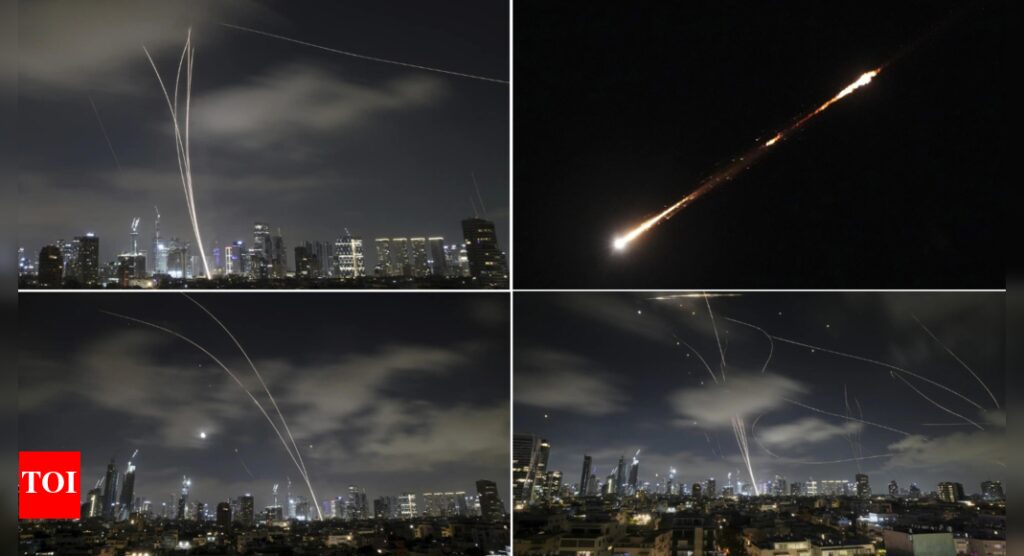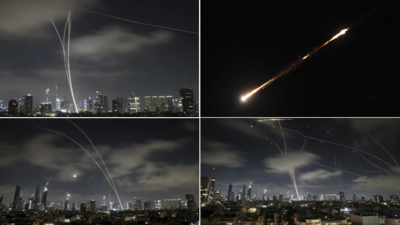Iran-Israel conflict: Bunker buster, nuclear breakout time – Key words and phrases explained

As the conflict between Iran and Israel intensifies, news reports are packed with complex military, nuclear, and diplomatic terms. Here’s a breakdown of the most commonly used words and phrases — and why they matter.

Uranium enrichment
Definition: The process of increasing the percentage of U-235 in uranium to make it usable for power plants or, at higher levels, for nuclear weapons.Context: Iran has enriched uranium up to 83.7%, just below the 90% needed for a nuclear bomb.
Air Dominance
Definition: A military condition where one side has complete control of the skies, able to operate without significant opposition.Context: Israel claimed it had full air dominance over Iranian airspace during recent strikes.
Bunker Buster (MOP)
Definition: A special heavy bomb capable of penetrating underground bunkers before detonation.Context: The US-made Massive Ordnance Penetrator (MOP) is the only weapon known to potentially destroy Iran’s fortified Fordow nuclear facility. Israel does not have this capability.
Fordow nuclear site
Definition: A heavily fortified, underground uranium enrichment facility built inside a mountain near Qom, Iran.Context: Considered nearly impossible to destroy with conventional weapons, Fordow remains operational despite repeated Israeli strikes elsewhere.
Targeted assassinations
Definition: Strategic killings of key military or scientific personnel to weaken an adversary’s capabilities.Context: Israeli strikes reportedly killed five Iranian nuclear scientists and several Revolutionary Guard generals.
Pre-emptive strike
Definition: A first-strike military action taken to prevent an imminent attack by the opponent.Context: Israel often justifies its operations against Iran’s nuclear infrastructure as pre-emptive self-defense.
Proxy war
Definition: A conflict in which two opposing powers support combatants in a third location rather than fight each other directly.Context: Iran supports groups like Hezbollah in Lebanon and militias in Syria and Iraq, often in opposition to Israeli interests.
Strategic depth
Definition: Gaining regional influence or territorial buffer to protect a nation’s core territory from attacks.Context: Iran builds strategic depth by supporting allies in neighboring countries to deter Israeli or American aggression.
Command-and-Control sites
Definition: Military installations responsible for coordinating operations, communications, and intelligence.Context: Israel has reportedly struck command-and-control centers used by Iran’s Islamic Revolutionary Guard Corps (IRGC).
Red Line
Definition: A boundary that, if crossed, will trigger immediate retaliation or escalation.Context: Israel considers Iran’s uranium enrichment reaching 90% a red line that could justify a direct strike on nuclear sites.
Nuclear breakout time
Definition: The time it would take for a country to produce enough weapons-grade uranium for a single nuclear bomb.Context: Analysts warn that Iran’s breakout time may be shrinking due to advancements in enrichment and centrifuge technology.
Nuclear fallout
Definition: Radioactive particles that spread through the air after a nuclear explosion or strike on a nuclear facility.Context: US officials have warned that using a bunker buster on sites like Fordow could cause radioactive fallout across the region.
NPT (Non-Proliferation Treaty)
Definition: An international agreement to prevent the spread of nuclear weapons.Context: Iran is a signatory but is accused of breaching its obligations by enriching uranium to high levels and limiting IAEA access.
De-escalation
Definition: Steps taken by conflicting parties to reduce tensions or avoid further violence.Context: Multiple countries are urging de-escalation to prevent the Iran-Israel conflict from spilling into a regional war.
Centrifuge manufacturing sites
Definition: Facilities where uranium enrichment centrifuges are built or assembled.Context: Israel has reportedly destroyed two centrifuge manufacturing sites near Tehran, dealing a major blow to Iran’s nuclear program.
Centrifuge
Definition: A machine that spins uranium gas at high speeds to separate isotopes — a critical step in uranium enrichment.Context: Iran uses advanced centrifuges to enrich uranium; the more efficient the centrifuge, the faster it can reach weapons-grade levels.
Supreme Leader
Definition: The highest-ranking political and religious authority in Iran, holding ultimate control over all branches of government, military, judiciary, and media.Context: Ayatollah Ali Khamenei, Iran’s Supreme Leader since 1989, is the final arbiter on domestic and foreign policy decisions. His authority surpasses that of the president or parliament, and in times of war or crisis—such as the current conflict with Israel—his statements and decisions carry decisive weight for the country’s direction.
Iron Dome
Definition: Israel’s mobile air defence system that intercepts and destroys incoming short-range rockets and artillery shells.Context: The Iron Dome has been instrumental in intercepting missiles launched from Iran or its proxies, preventing mass casualties in Israeli cities.
IRGC (Islamic Revolutionary Guard Corps)
Definition: An elite branch of Iran’s armed forces, tasked with protecting the Islamic regime and projecting Iranian influence abroad.Context: The IRGC often directs Iran’s regional military operations and oversees drone and missile programs; many Israeli strikes target IRGC assets.
Hezbollah
Definition: A powerful, Iran-backed Shia militant group based in Lebanon.Context: Hezbollah is considered Iran’s most significant regional proxy and has exchanged fire with Israel along the Lebanon border during the conflict.
Shahid Drone
Definition: A type of Iranian-manufactured suicide drone used for long-range strikes.Context: Iran has deployed Shahid drones against Israel and has also supplied them to Russia and proxy groups in the Middle East.
Axis of Resistance
Definition: A loose alliance of Iran, Syria, Hezbollah, and other Iran-backed militias opposed to Israeli and US presence in the region.Context: This bloc coordinates military and strategic actions against Israel, often through asymmetric or proxy warfare.
No First Use (NFU) Policy
Definition: A declaration that a country will not use nuclear weapons unless first attacked with them.Context: Israel does not have an official NFU policy and has neither confirmed nor denied possessing nuclear weapons, adding ambiguity to regional deterrence.
Strategic Ambiguity
Definition: A national policy of deliberately withholding information about military capabilities or intentions.Context: Israel’s policy of not officially confirming its nuclear arsenal is an example of strategic ambiguity used to maintain deterrence.
Decapitation Strike
Definition: A military strategy aimed at killing or incapacitating a nation’s top leadership to disrupt command and control.Context: Trump’s suggestion that the US could assassinate Khamenei falls under the concept of a decapitation strike, which risks major escalation.
Mutual Assured Destruction (MAD)
Definition: A doctrine of military strategy where both sides possess the capability to destroy each other in the event of a nuclear war.Context: Though not directly acknowledged, the fear of MAD influences how nuclear powers like the US or Israel approach Iranian ambitions.
IAEA (International Atomic Energy Agency)
Definition: The UN’s nuclear watchdog, responsible for monitoring nuclear programs and ensuring peaceful use of atomic energy.Context: Iran has restricted IAEA access to nuclear sites, leading to global concern over transparency and compliance with the NPT.
Barak-Magen
Definition: A multi-layered air defence system developed by Israel, combining the Barak (light-to-medium range) and Magen David (David’s Sling) interceptors for enhanced aerial threat protection.Context: Israel deployed the Barak-Magen system during the current conflict to counter Iran’s missile and drone barrages, including cruise missiles and potential hypersonic threats.
Zionism
Definition: A political and ideological movement supporting the establishment and preservation of a Jewish homeland in the historic land of Israel. Context: Zionism underpins the founding of the State of Israel and continues to influence its national policies. Iran often frames its opposition to Israel as resistance to Zionism rather than Judaism, positioning Zionism as a political target in the ongoing conflict.





